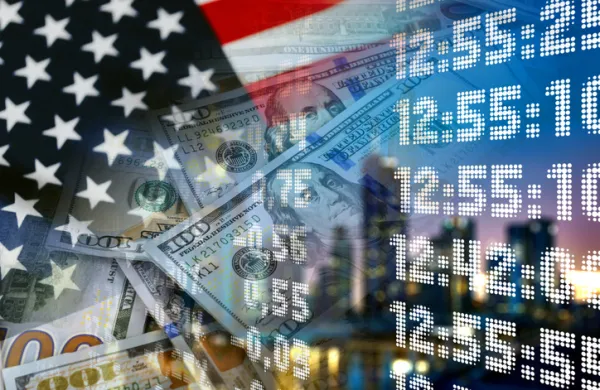The young analyst was aghast. It was late 1999, technology stocks were hot, and his new firm -- Australia's Platinum Asset Management -- was shorting some of the iconic names of the glorious wired future, such as telecommunications powerhouses Deutsche Telekom and France Télécom. The analyst was so perturbed that Platinum's founder, Kerr Neilson, felt that he needed reassuring.
"I took him to one side," recalls Neilson. "I pointed out that half a dozen telecom companies now had a market capitalization of $2.5 trillion and that the entire U.S. economy was worth $10 trillion." How much more obvious could it be that global telecoms were overvalued?
Of course, the U.S. Nasdaq composite index, that barometer of the tech stock climate, cracked just a few months later, ending the year 2000 down 30 percent. Deutsche Telekom tumbled 60 percent from its peak; France Télécom, 50 percent. Platinum, however, had a stellar year. Its flagship, Australian-dollar, long-short Platinum International Fund jumped 18 percent.
"What the bubble created was tremendous hubris," says Neilson. "Bankers and analysts who had never created anything, never built anything, were traveling the world telling companies how they should run themselves. I wouldn't trust most of them to tie their own shoelaces. As for City types, the toughest decision most of them have to make is whether to have claret or burgundy with lunch."
In postbubble 2001 -- a grim one for most money managers -- Platinum International gained an extraordinary 30 percent; the MSCI world index, meanwhile, tumbled 8 percent. And in terrible 2002 Platinum International kept its loss to 3.9 percent, while MSCI world plummeted 27.2 percent.
Platinum Asset Management doesn't thrive only on disaster, however. Since Platinum International's May 1995 launch, the fund has gained 17.5 percent a year on average (through March), versus 6.6 percent for the MSCI world index and 14 percent for the Hennessee long-short equity hedge fund index. Such performance warrants comparing Neilson with the brightest stars in the hedge fund firmament. (Technically, he isn't a hedge fund manager, Neilson insists, since his funds never go more than 40 percent net short; he also shuns leverage.)
Dixon Boardman, who runs New Yorkbased fund-of-hedge-funds specialist Optima Fund Management (and invests with Platinum), says of Neilson: "If you are looking for a value-oriented stock picker, there is no one better than Kerr. In his style Kerr is one of the greats, right up there." Another admirer is hedge fund legend George Soros, who not only invests with Neilson but also owns 20 percent of his firm.
Like the platypus and other strange and marvelous creatures that inhabit Australia, Neilson is a genus apart. He was one of the first to open an investment boutique Down Under and the first to go short. Now Neilson is something of a folk hero to retail investors in Australia: a Crocodile Fund-ee. His name is familiar not just to Sydney's George Street financial cognoscenti but also to the Bruces and Sheilas in the pubs and malls. Stellar performance has a lot to do with his visibility, but Platinum's offbeat advertising adds to the firm's aura. A typical ad shows a diminutive cartoon bird nesting on a large walnut. The caption: "Every problem has a solution. The wrong one."
But having built and run his firm on his own terms, Neilson finds Platinum growing so quickly -- assets increased by A$1.8 billion ($1.1 billion) last year, almost ten times as fast as in the late 1990s -- that he risks becoming prey to the same short-term performance pressure as his big institutional competitors. He must continue to deliver top results not just year-to-year but quarter-to-quarter, or the jumpier of the retail investors who account for 75 percent of Platinum's A$6.5 billion in assets are liable to bolt. That's not to mention the less flighty but equally demanding high-net-worth clients who account for almost all of the firm's remaining assets. (Neilson considers institutional investors too much trouble, and Australian regulations let him court regular retail as well as high-net-worth investors for long-short funds.)
Might now-solid Platinum succumb to its own success? "If you had asked me at almost any time during the past decade if I could have taken in A$1.8 billion in 12 months, I would have hesitated and probably said no," Neilson says. "But the markets have changed. We are now, almost for the first time, very heavily invested in big liquid stocks in big markets."
Don't suppose, however, that this makes his portfolio the least bit conventional. Platinum International's largest long positions are in markets and companies that generally are out of favor. Neilson is finding plenty to buy, for instance, in Germany and Japan, although he acknowledges that they are perceived as "dinosaur" economies.
Neilson likes the way Japanese and German companies are good at the "real building block stuff -- R&D, innovation, the tough work of building a business." Japan, he contends, "could be at the start of a bull market." For one thing, he notes, in an environment of negative interest rates -- that is, free money -- good companies ought to be able to produce decent results.
"If you ask me what we do here all day, the answer is that we try to find good companies to buy cheaply," says Neilson, who describes himself as a bottom-up investor. Nonetheless, he regards macroeconomic themes as important: "They bring order to the chaos of looking at tens of thousands of companies."
Neilson's German stock picks include such Old Economy stalwarts as engineering company Siemens and steelmaker ThyssenKrupp. In Japan he likes an eclectic mix of businesses, from Citizen Watch Co. to Yamanouchi Pharmaceutical Co.
Japan's Fanuc is a typical Neilson investment. The world's largest producer of electronic controls for machine tools, it is also one of the biggest makers of industrial robots. "Fanuc has been increasing spending on R&D whilst its European and U.S. competitors have cut back to flatter their next set of results," he says. "Fanuc is growing market share."
Neilson thinks the next great investment surge, however, will be in developing Asia. "China is producing 600 million tonnes of cement; U.S. production is 90 million tonnes," he notes. "China is producing 180 million tonnes of steel. No nation on earth has ever produced this amount of steel. If you believe the numbers, at the height of the Soviet Union it produced 130 million tonnes. China's is an enormous economy. There are 400 million people in China [of a population of 1.2 billion] who are living quite well. What this means is that Asia will continue to grow even if the Western Hemisphere stays in recession."
Neilson is not at all bullish on America. He is net short on U.S. stocks, and he's betting against the greenback. The fund manager maintains that the currency, the economy and U.S. companies must all work their way through the excesses of the bubble era. Neilson sees deep-seated problems in the U.S. "We think the U.S. is overdosing on credit, so we are looking for shorts in the financial sector," he says. He calls mortgage securitizer Fannie Mae a "great big geared hedge fund, probably riskier."
Neilson castigates "American pundits who threw the charge of crony capitalism at Asia -- now that their own system has been shown to be utterly corrupt." And he argues that the bread-and-butter skills of building a business "got lost in the U.S. in the rip-off culture in the 1980s and 1990s." He also rails against "CEOs who think they are so special they need tens of millions to get out of bed every day."
Yet Neilson is not as bearish on the U.S. as he may sound. He admits to a certain perplexed ambivalence. "I'm not sure I know where the ball is," he says. "The valuations are wrong, and there is still enormous deceit, but I am not comfortable because I can't hear the music coming through."
The war in Iraq was, ultimately, a sideshow compared with the fall of the U.S. dollar, Neilson contends. "The gold bugs are talking about the debasement of currencies," he observes. Thus he has put 5 percent of Platinum International into a variety of gold stocks, including Newmont Mining Corp. and Barrick Gold Corp., and he reasons that gold's decline from $380 an ounce in early February to $326 in late April was simply the market testing the bulls.
NEILSON WAS BORN INTO A WEALTHY SCOTTISH family that emigrated to South Africa after World War II. (One of his ancestors, James Beaumont Neilson, invented the hot-air blast technique for smelting iron.) Unhappy in the racist and rigid South Africa of his youth, Neilson spent two years in London while in his 20s, working for Courtaulds Textiles' pension fund. That experience introduced him to sophisticated securities research and also persuaded him to abandon South Africa. So even as he returned home to work as an industrial analyst in Johannesburg, Neilson plotted his escape.
Obtaining a U.S. green card was difficult, and Canada was "too cold," he decided. So in June 1983 Neilson, then 33, wound up in sunny Sydney, swallowing a pay cut to join Bankers Trust Australia. Neilson knew virtually nothing about his new firm, but he seemed to have been blessed with his adopted country's legendary luck: His new employer was the dominant force in local institutional fund management.
Neilson soon stood out. Mike Crivelli, one of three top managers of BT Australia's asset management business (and now executive chairman of Sydney-based Perennial Investment Partners), remembers: "Kerr was always very much a stock picker and did rigorous company analysis few BT people could do. When it came to finding someone to run retail portfolios, he seemed a natural choice."
Neilson took charge of the bank's fledgling retail business, BT Financial Services, in 1985 and soon established an investment approach that, with scant variation, defines Platinum Asset Management today. The Neilson method: build concentrated portfolios, typically of fewer than 100 securities, from the bottom up and with a clear value bias, and pay no heed to market-cap weightings in indexes or tracking error.
Neilson managed all four of BT's new retail funds -- American Growth, Equity Imputation (an Aussie fund), European Growth and Pacific Basin -- and within six months all were handily outdoing their peers. But what really launched Neilson -- despite himself -- was the 1987 crash. Forced to attend sessions of BT's asset allocation group, he was bored as colleagues droned on about whether Japanese or U.S. stocks were better or whether the German yield curve would steepen. A fellow sufferer once scribbled a cartoon of Neilson disdainfully burying his face in a newspaper. The caption: "No comment!"
But toward the end of 1986, Neilson found himself paying fresh attention. BT's asset allocators were getting nervous about the Australian stock market, and they had started selling index futures and buying put options to reduce the bank's exposure. Neilson was suspicious of this top-down call. Still, he kept running out of companies to buy at decent prices. So he soon enthusiastically joined in, in effect shorting the Australian index. That was a daring strategy. The instruments involved were new and untested, and as the index continued to soar, from 1,500 in January 1987 to beyond 2,300 that June, BT's clients grew worried.
But as BT's portfolio managers headed for work on Tuesday, October 20, they sensed that they were about to be vindicated -- dramatically. During the night the U.K. and then the U.S. stock markets had collapsed. A tsunami of selling was heading across the Pacific. By the end of the week, the Australian all ordinaries index was down 34 percent from its peak. Protected by its hedge, Neilson's Australian equity fund was down just 10 percent; other popular equity funds were nursing losses of up to 80 percent. Neilson had learned the value of shorting.
Money began flooding into BT. BT Financial Services had taken five years to reach A$1 billion in assets; the next A$1 billion took 17 months. By 1993 BTFS was adding A$1 billion every six months. Revenues had shot up 20-fold.
But Neilson, who enjoyed being BT's resident iconoclast, was becoming exasperated. "Kerr was creating huge value for the firm. He wanted equity and asked [then-CEO] Rob Ferguson for it," recalls former BTFS manager Crivelli. "Rob said no way, and Kerr rightly took the view that there was no point in giving his all and getting nothing back."
Quitting to start his own firm, however, was a bold step. At the time, Australia had only one such boutique, but Neilson drew courage from having run BTFS essentially as his own fiefdom: It was his process, his track record and his people. Another source of confidence: the prospect of winning the backing of an important patron, Soros.
Neilson had met the famous fund manager in early 1991, after the international fund he managed for BTFS was bested only by Soros' Quantum Fund in a Lipper survey of the world's top international/global equity performers in 1990. Flying into New York from Venezuela in the middle of a snowstorm, Neilson arrived late and disheveled at Soros Fund Management's Park Avenue office. Quantum Fund managing partner Stanley Druckenmiller was appalled that this odd Antipodean knew so little about the fund manager he was privileged to be meeting. "What could I say?" recalls Neilson. "I explained that I was running lots of funds and had a head-down, arse-up existence."
Still, he and Soros hit it off. "He was very kind and gave me money to run," says Neilson. "He was also very charming. The funniest thing he said to me was, 'How can you manage money when you get the Financial Times two days late?'"
So when Neilson resigned from BT in February 1994, he called Soros. By the time Platinum was up and running three months later, the Quantum founder had transferred over his BT account and, what's more, bought 20 percent of Platinum. (Neilson won't say at what price.) Soros, according to one well-placed source, was so impressed by Neilson that he asked him to come work for him, but Neilson demurred.
Neilson didn't leave BT empty-handed. Along with the Soros account -- sources suggest it was about $125 million -- he bagged four key members of his old portfolio management team: Andrew Clifford, who now oversees North America for Platinum; Toby Harrop, who looks after Europe; James Simpson, who handles Japan and Korea; and Malcolm Halstead, Platinum's finance director. This blow to BTFS was compounded when Neilson signed a marketing deal with one of the bank's rivals.
Starting out with three funds, Neilson's enterprise was an instant hit, surprising even its most ardent backers. Within 18 months the firm was managing close to A$900 million. Neilson now had two significant U.S. partners: Soros and fund-of-funds Optima, which raised $130 million in the U.S. and Europe for Platinum Fund, a jointly branded, U.S.-dollar-denominated offshore fund domiciled in Bermuda.
Platinum Asset Management looked as if it would be one of the great fund manager launches. But then Neilson went off the boil. He blames himself for misreading the markets in 1994'95. "It was solely to do with my incompetence," he says. "I got negative on the U.S. far too early, and I was too bloody stubborn to change my mind."
For two rocky years Platinum's funds barely outperformed their indexes, and it was only the high fees paid by Optima and Soros that kept the business afloat, according to a credible source. "We were wedded to deep value when the market was paying up for growth," Neilson says. "We'd made a fortune buying companies that hoarded assets as a hedge against inflation in the '80s. When the inflation bubble burst, they were sitting on redundant assets that were undervalued. The game changed. The greatest problem in this business is a skew, a natural style drift to what has worked. I guard against that now."
That isn't to imply that Neilson converted wholeheartedly to the growth gospel. Platinum funds never did dabble in dot-com IPOs, and Neilson bluntly asked one Cisco Systems official in late 1999, "Why are you so committed to lying?" (He now insists, with a hint of a smile, that this "wasn't an attack but a genuine query.") Among tech, media and telecom stocks, Neilson preferred the dowdier sort -- those with real customers and actual balance sheets. This unfashionable fuddy-duddyness worked: In 1999 Platinum International soared 33 percent. Neilson was again rewarding investors' faith, and they responded warmly.
That year Platinum's assets surged from A$1.3 billion to A$2.1 billion, and then between December 1999 and December 2001 they doubled, to A$4.4 billion. Last year Platinum ranked third for mutual fund inflows among Australian funds behind behemoths AMP and National Australian Bank/MLC, according to Australian fund-rating agency Assirt.
Neilson doesn't take his responsibility to retail investors lightly. "I know that most of my investors are in their 50s," he says. "I can't lose them money because I know it will be too late for them to make it back."
Australia's private pension scheme is, in fact, what has allowed Platinum and other boutiques to flourish amid hulking competitors. More than 80 percent of Australians' mandatory retirement savings are distributed through master trust platforms that level the playing field by giving boutiques' products a place in the shop window alongside those of bigger rivals. Still, if a small firm has poor results for a quarter or so, financial advisers might pull this pension loot.
The obvious solution for Platinum would be to seek more stable institutional money for ballast. Optima's Boardman sighs at the very thought. "If I said to Kerr, 'There is $100 million you have a good chance of winning from a pension fund in the U.S., will you come to a meeting with the trustees?', the likelihood is that he would say no," Boardman says. "He loves running money and doesn't want to deal with potential institutional clients who demand one-to-one meetings."
Neilson's disdain for cultivating all of Platinum's potential sources of business could of course leave the firm vulnerable in a prolonged downturn. Nevertheless, the fund manager sounds pretty emphatic about shunning institutional money: "We gave up trying. We knew we didn't fit in a box and so could get no sponsorship from the gatekeepers." Crivelli says his former BT colleague has always pursued his own path. "He knows he can be out of sync [as an investor] for long periods," he says. "There must be times when it is horrible to be Kerr Neilson. But last time I saw him, he was looking well."
Perhaps it's the Australian climate, or the lifestyle. Sydney is "the best city in the world," declares Neilson, who surfs out of his beach house at Manly. "Why would I live anywhere else?" His outlook has become thoroughly Australian. "No one here is impressed by snobbery or hype," he says. "You can go to a party hosted by some big noise in banking and you'll meet plumbers and decorators because they are bloody big fans of the same footie team or mates from school. That's healthy. You won't find many Australians holding forth on the New Economy because they live in the real world."
So far that real world has yielded remarkable returns for Neilson.





